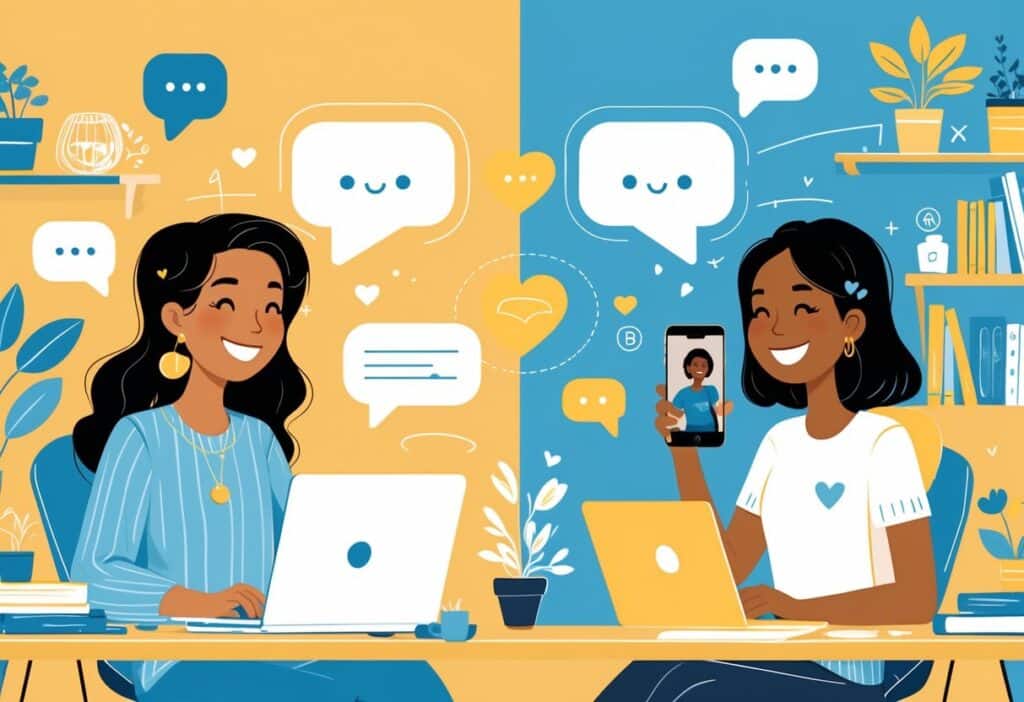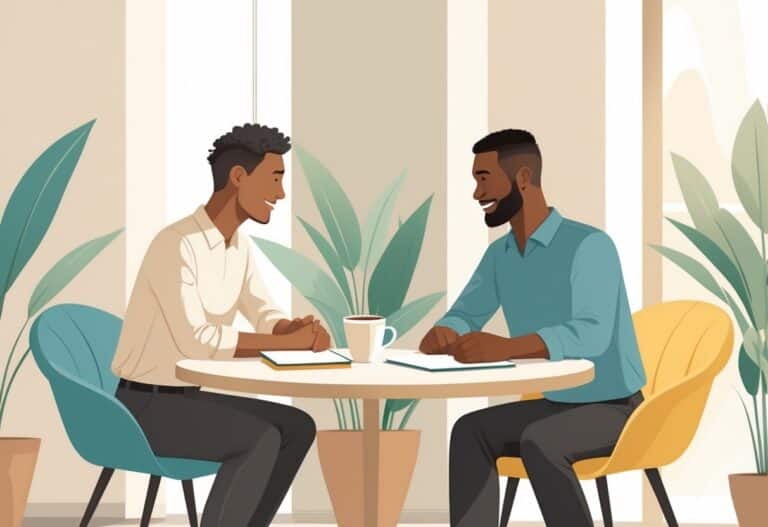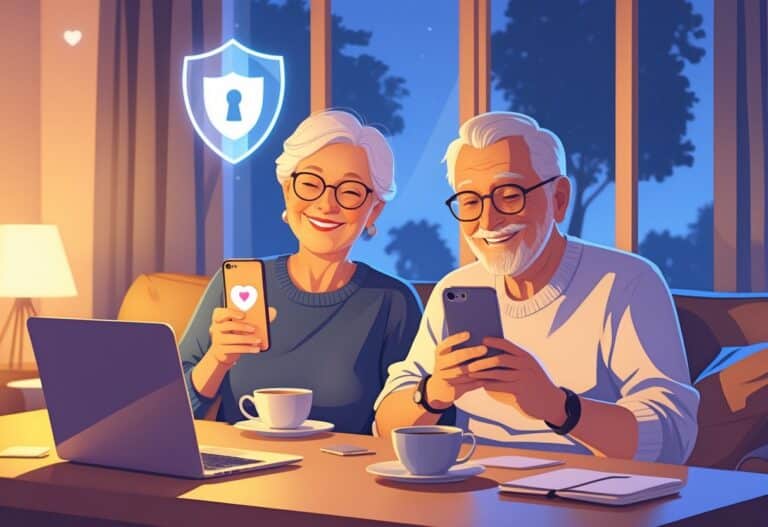Moving to a new city, changing jobs, or just drifting in different directions doesn’t mean you have to let go of your closest friends. Plenty of people struggle to keep friendships alive when distance steps in, but honestly, meaningful connections can stick around—no matter how many miles are in the way.
The trick to making long-distance friendships work? Be intentional about how you communicate, get creative with how you connect, and, yeah, show up for each other even when it’s not easy. It takes more effort than friendships with people you bump into every week, but long-distance friendships can be just as rewarding if you find the right rhythm.
From setting up regular check-ins that really fit both your schedules, to finding quirky ways to celebrate big moments, there are ways to help friendships not just survive, but actually get stronger. Whether your friend is a state away or living on the other side of the planet, good habits keep your bond alive.
The Importance Of Maintaining Long-Distance Friendships
Long-distance friendships offer deep emotional support. They also push you to grow in ways you might not expect.
Benefits Of Strong Long-Distance Friendships
Emotional stability—let’s be honest, that’s a big one. Maintaining long-distance friendships can give you steady support during big life changes.
Your faraway friends often see things more clearly. They’re removed from your local drama and can offer honest advice.
Personal growth? It happens fast with friends who live in other places. You both share stories from different cities or even cultures, and that just opens your mind.
Long-distance friendships sometimes end up stronger than the ones right next door. When you both put in extra work, you know it’s real.
You end up with a more diverse support network. Friends in different places can offer unique advice and even job connections you wouldn’t have otherwise.
And honestly, the flexibility is nice. You can chat when it works for you—no pressure to meet up at a set time every week.
Challenges Unique To Long-Distance Friendships
Time zones can be a pain. Trying to find a time that fits both your schedules isn’t always easy.
Communication gaps show up more often when you can’t see each other. Texts miss tone and body language, so sometimes things get lost in translation.
You miss out on those spontaneous moments. No more last-minute coffee runs or quick hangouts—everything needs planning.
Life changes take longer to share. Sometimes your friend misses out on big news just because you’re both busy or messages get delayed.
Keeping things close feels harder. Without hugs or in-person hangouts, you rely completely on digital connection.
And then there’s the cost. Visiting each other or long phone calls can add up, so meeting in person becomes a big deal.
Establishing Regular Communication Habits

Keeping in touch regularly is the backbone of any long-distance friendship. If you set up routines and pick the right ways to connect, you’ll stay close, regardless of miles.
Scheduling Consistent Check-Ins
Regular communication schedules prevent friendships from fizzling out. Find a frequency that fits both your lives.
Weekly Options:
- Sunday evening video calls
- Wednesday lunch break texts
- Friday night catch-ups
Pick times that work in both time zones. If your friend’s three hours ahead, a 7 PM call for you is 10 PM for them—don’t forget to check.
Calendar reminders help you stick with it. Treat check-ins like any other important plan.
Some friends prefer monthly, deeper conversations instead of daily quick texts. Figure out what works for your vibe.
If life gets wild, reschedule instead of skipping. It’s better to move things around than to let them slide.
Choosing The Right Communication Channels
Not every platform fits every friendship. Technology makes staying connected easier than ever if you pick something you both actually like using.
Quick updates: WhatsApp, texts, Snapchat
Deep chats: Phone calls, FaceTime
Group stuff: Discord, Zoom, Marco Polo
Voice messages are perfect when you’re busy. Record a quick note while you’re on the go.
Some people love writing long emails. If that’s your thing, go for it—sometimes it’s easier to get your thoughts out that way.
Video calls make a difference. Seeing each other’s faces really helps when you can’t be in the same room.
Try out a few apps. The best one is the one you’ll both use, even if it’s not the fanciest.
Sharing Daily Life And Staying Involved
It’s the little things that keep you close. Share your everyday moments, not just the big news.
Send a photo of your morning coffee, a weird sign you saw, or your messy desk. These tiny glimpses help you feel like you’re still a part of each other’s lives.
Things to share:
- Work stories or wins
- New restaurants
- Books or podcasts you’re into
- Weekend plans
Ask about the details in their life, not just “How are you?” Try “How did your presentation go?” or “Did you finish that book?”
Share your struggles and your wins. Friendships need both.
Voice memos are a lifesaver for longer stories. Record one while you’re out for a walk and send it off—no need for a formal call.
Creative Ways To Stay Connected

Tech these days gives you so many ways to bridge the gap. Playing online games together or watching shows at the same time can almost feel like hanging out in person.
Virtual Hangouts And Shared Activities
Video calls don’t have to be just talking. Add an activity and suddenly it’s way more fun.
Try these:
- Cooking together: Make the same meal while you chat.
- Virtual tours: Explore museums or cities online.
- Book clubs: Read the same book, then talk about it.
- Art projects: Draw or craft while you catch up.
Collaborative activities help maintain strong connections. Take an online class together, or learn a new skill side by side.
Game nights are a blast for groups. Trivia apps, online board games, or party games—everyone can join from their phone.
Put these activities on your calendar. Treat them like real plans, because they are.
Watching Movies And Shows With Teleparty
Teleparty (formerly Netflix Party) lets you watch shows and movies together, even if you’re far apart. It syncs up playback so you’re always at the same spot.
There’s a chat feature, so you can laugh or react in real time. It’s not quite the same as sharing a couch, but it’s pretty close.
Watching shows together recreates the couch experience. Pick a series to follow or do movie marathons on weekends.
Set up viewing parties for:
- New releases
- TV premieres
- Holiday specials
- Old favorites
You’ll end up with inside jokes and new things to talk about. Sometimes you’ll even find a new favorite show thanks to your friend.
Collaborative Playlists And Online Games
Music connects people, even when you’re far apart. Make a playlist on Spotify or Apple Music—both of you can add songs.
Ways to use playlists:
- Add songs that remind you of each other
- Share new discoveries
- Make themed playlists for different moods
- Create a soundtrack for your friendship
Online games provide ongoing entertainment. You don’t have to play at the same time—games like Words With Friends or Draw Something let you take turns whenever.
Popular picks:
- Multiplayer phone games
- Steam games for computer folks
- Console games with online play
- Browser-based party games
Each move or song addition is a tiny way to say, “Hey, I’m thinking of you.”
Adding A Personal Touch From Afar
Physical gestures mean even more when you’re far apart. Handwritten notes or care packages show you’ve put in real effort.
Sending Handwritten Letters And Postcards
Handwritten letters stand out these days. Your friend will feel the time and care you put in.
Pick fun stationery or something that matches your friend’s style. Share a memory, talk about your week, or just doodle something silly.
Postcards are great for quick notes. Send them from places you visit or grab a cool vintage one online.
What to include:
- Updates about your life
- Questions about what they’re up to
- Shared memories or inside jokes
- Future plans for when you’ll meet again
Mail letters regularly, if you can. There’s something special about checking the mailbox and finding a surprise.
Surprise Gifts And Care Packages
Care packages show appreciation and care. They’re a little piece of home, sent straight to your friend.
Fill them with things that remind you of each other. Favorite snacks, souvenirs from your city, or stuff that fits their hobbies.
Ideas:
- Local treats they can’t get where they are
- Printed photos
- Something that smells like home
- Books or magazines they’ve wanted
- Homemade cookies (if you’re into baking)
Send packages for birthdays, tough weeks, or just because. Surprises are half the fun.
You don’t have to spend a ton—homemade or simple gifts mean just as much.
Celebrating Milestones And Special Occasions
Being far away makes it tricky to share the big moments, but celebrating together keeps your friendship strong. It’s about showing up, even from a distance.
Sharing Achievements, Birthdays, And Anniversaries
Celebrating milestones and special occasions is crucial. Mark your friend’s important dates in your calendar as soon as you hear about them.
Send gifts that arrive on the actual day. Sometimes it’s easier to order from a store near your friend to avoid shipping delays.
Birthday gifts that tap into inside jokes or shared memories are always a hit.
Make digital photo albums for friendship anniversaries. Screenshots of funny texts, old photos, and voice notes all count.
When your friend shares good news, text them right away. Follow up with a call or video chat to really celebrate.
Handwritten cards for big events like graduations or new jobs stand out more than a quick message.
Organizing Virtual Celebrations
Video call during celebrations. Plan ahead to make sure everyone can join, even across time zones.
Throw a virtual birthday party. Send party hats or silly props ahead of time so you can both get in the spirit.
Have a dinner date over video. Order the same takeout or cook the same recipe and eat together on camera.
Play games during your celebration—maybe trivia about your friendship or a silly online game. Keeps things lively and fun.
Make a playlist for the special day. Listen together while you chat, and let the music set the mood.
Supporting Each Other Emotionally Across Distances
Being there for a friend emotionally gets tricky when you can’t just offer a hug or sit together. Still, maintaining emotional closeness across long distances is absolutely possible if you put in the effort.
Offering Emotional Support Remotely
Active listening is your best friend here. When your friend shares what they’re going through, ditch the distractions and really listen.
Ask questions that show you care and want to understand. No need to overthink it—just be present.
Timing matters. Try to learn your friend’s routine so you can check in when they need it most. A quick message during their exam week or a stressful work deadline can mean a lot.
Mix up how you communicate:
- Voice messages bring warmth and nuance you just can’t get from text
- Video calls help you see emotions on their face
- Handwritten letters? Those are a gem—they can reread them whenever
Validate their feelings. You don’t have to fix everything; sometimes just saying, “That sounds really hard,” is enough.
If you have a similar story, share it, but keep the spotlight on them. It’s their moment.
Little gestures help bridge the gap. Maybe send their favorite snacks or set up a surprise delivery.
Navigating Tough Times Together
Big life challenges can really test long-distance friendships. It’s tough watching a friend struggle when you’re far away. Staying connected during difficult periods takes extra creativity.
When things get rough, reach out more often. Even a quick daily check-in can help when they’re facing loss or major stress.
Sometimes your friend won’t reply right away. That’s okay—give them space to process, but keep showing up without pushing for a response.
If you know mutual friends or family, team up. You can organize group messages or make sure someone close by can help if needed.
Try to learn about what they’re facing. Read up, ask questions, or talk to people who’ve gone through something similar. It helps you offer real support.
Sustaining Long-Distance Friendships For The Long Term
Face-to-face visits bring energy you just can’t get from a screen. Staying flexible as life changes keeps friendships strong, even when things get complicated.
Planning In-Person Visits When Possible
Meeting up in person creates memories that stick long after the visit ends.
Start planning visits early. Check out your schedules a couple of months ahead and pencil in possible dates before life gets in the way.
Take turns visiting. It’s only fair, and it gives you each a chance to show off your city or home. Nobody wants to always be the one traveling.
Make visits count. Jot down a few ideas before you meet:
- Spots you both want to check out
- Restaurants to try together
- Activities you can’t do over video
- Time just to talk and catch up
Try meeting in a new city. Sometimes it’s more fun to pick a spot halfway or choose a destination you both want to explore.
Budget for visits. Set aside a little money each month for travel. Even small amounts add up, and it makes those trips way more doable.
Embracing Flexibility And Understanding
Your life changes as you get older. Maintaining long-distance friendships means rolling with those changes, not letting them wreck your bond.
Expect communication patterns to shift. Maybe you text every day now, but later you might only chat once a week.
New jobs, relationships, or family stuff can eat up your time. Friends get busy—it’s just how life goes.
Support major life changes. When your friend gets married, has kids, or lands a demanding job, their schedule will shift.
Try to celebrate these moments with them, even if you feel a bit left out sometimes.
Adjust your expectations as needed. The friend who called every Sunday might only manage once a month now.
That doesn’t mean they care any less, though. Life just gets complicated.
Be patient during difficult periods. Everyone hits rough patches with work, family, or health.
Sometimes your friend needs space. Try not to take it personally.
Communicate when you feel disconnected. If you miss talking, just say so.
Most friends want to stay close, but daily life gets in the way. Honest conversations usually help you both figure something out.






